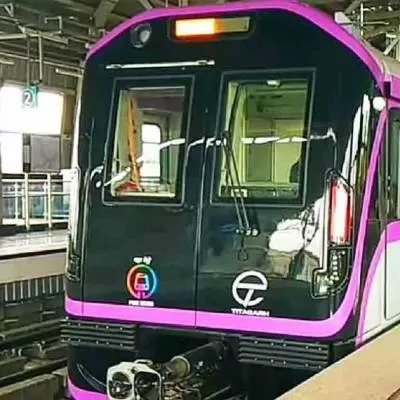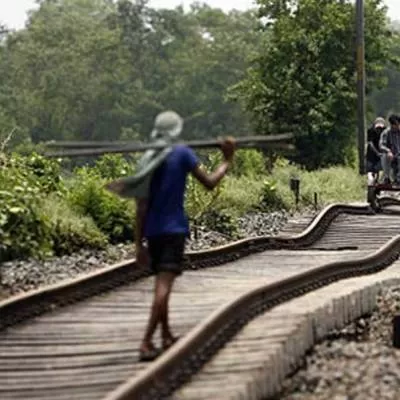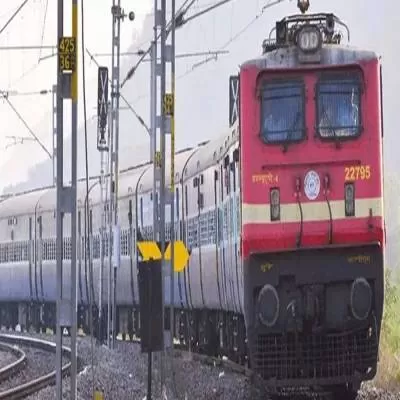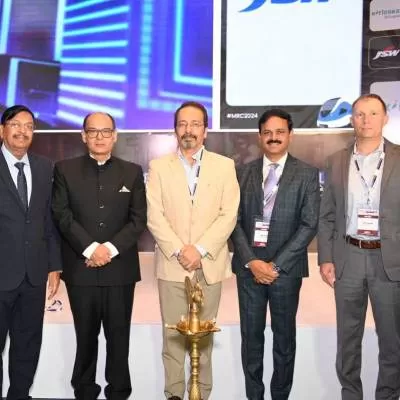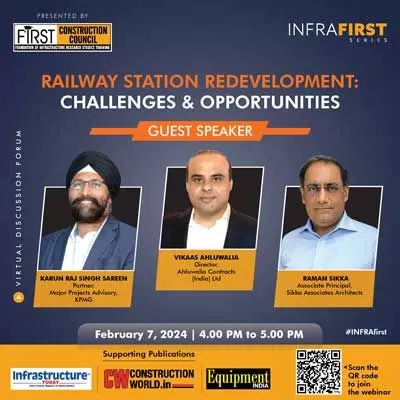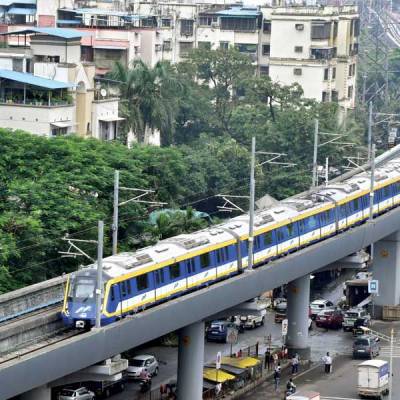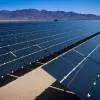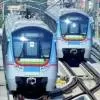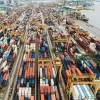- Home
- Infrastructure Transport
- RAILWAYS & METRO RAIL
- We have clear targets and work backwards.

We have clear targets and work backwards.
How has the year actually been in terms of the market scenario?
Optimistic. Despite a sluggish market, I still see a lot of opportunities. With many companies being in financial trouble, our competitors have reduced by half or even two-thirds. For instance, only two companies participated in the JNPT project worth Rs 2,100 crore and the southern Udangudi Power Project. So, it was us and a competitor. Many companies may not be able to procure bank guarantee for large projects such as the Mumbai Metro, where the bank guarantee itself, is about Rs 4,000 crore for the purchase of the special TBMs, which is just the equipment and an accessory of about 13-14 per cent.
With the requirement being four TBMs, and the cost of one about Rs 60 crore, imagine the money required just for equipment capital! Working capital is another 20 per cent and factory labour and a lot of things also come to play.
What factors have contributed to making your order book rise?
We have clear targets and work backwards. We have statistics for each and every performance. Last year, my success rate was 26 per cent; from this, we record segment-wise success rate. For example, speciality is 30 per cent, building high-rise is about 10 per cent, etc, and based on this, we work backwards. So, if we target to secure one project in building work, we would have to submit 10 tenders; to secure two, make 20 submissions. This is how we have worked with every segment. And, in the past two years, when the order book of many companies was coming down, we were going up.
You have emerged as one of the lowest bidders for the Mumbai Metro and for projects worth around Rs.2,200 crore...
The trend of winning price has changed. Initially, it was fine to quote 5-10 per cent below the budget, but today, it is almost 5-10-20 per cent above the department budget everywhere. So, to me, the Mumbai Metro price is above the budget. But, it will take time for the government for the justification; they will try to narrow the gaps and we hope that by the first quarter of this year, things will move. Also for the Udangudi Power Project, justification is on and we hope to succeed in both Udangudi and Mumbai Metro.
What is the status on the huge order bagged for the JNPT port?
Of the Rs 2,160 crore order, we almost completed about Rs 900 crore by December 2015. This project comprises two main activities: Reclamation filling and dredging. We were to complete 9 million cu m dredging by April 2016, but completed most of it by December, and now, it is 100 per cent complete. As for the reclamation of 6 million cu m, we completed 3.5 million, which is over 50 per cent and it is going well.
You have taken a step back from roads...
We have been in this segment since 2001. Although we think optimistically about it, I try to be more selective. We like to focus on big flyovers and the hybrid model. However, in the past few months, though tenders have floated on the hybrid model, not many companies have shown interest. This is because they cannot tie-up with financial sources. Hybrid is annuity-based and a fund is a requirement for doing the job. We believe we could have a good chance on the hybrid model with few competitors. But, I will go slow on NHAI projects, because I want to see NHAI´s commitment and the same condition in the contract.
I want to see at least two to three projects take off. We may submit bids for few projects, so we are not completely out from this segment.
How much does the company invest in equipment?
About four to five years ago, we spent about Rs 57 crore a year. But since, we have focused more on project-specific requirements and spent about Rs 27 crore on average in the past three years. Depending on tenders bagged, we specify what will be in-house equipment, external hire equipment or new purchases.
What measures are taken to ensure safety?
Our company has spent a lot on safety. We have a clear target on safety; we have an AIR (accident incident rate), normally used worldwide, and a severity rate to control serious injuries or accidents. We look at the past three years´ average and cut down by 5 per cent for the next year. In terms of methodology, the best way to handle safety is to have the engineer and area managers themselves be safety officers. I try to incorporate this as multitasking, where an engineer does technical as well as safety work. Also, the equipment used has to be checked; for instance, before handling heavy lifting equipment, you need the certificate and ensure it is okay. We are among the top in safety; my working philosophy is based on three aspects: Safety, quality and delivery.
How do you get and retain skilled manpower?
We have training every month. We target the number of people to be trained for every activity. The best way is to grow our own people; so, if we require 10 training engineers, we recruit 30. This is because if they leave the company in future, we will have the rest with us. In the first year at our company, we give them the work and in the second year, we let them find their area of strength. As part of our company culture, we believe in training and retention. At the outset, the company has engineers and other employees who started their career way back in 1978. The biggest hallmark of our company is good training from elite campuses - we pick people, train them well, empower them, and create a sense of belonging. So, we have better human assets compared to capital assets; that´s what drives these projects.
- Adun Saraban, Managing Director, ITD Cementation India Ltd How has the year actually been in terms of the market scenario? Optimistic. Despite a sluggish market, I still see a lot of opportunities. With many companies being in financial trouble, our competitors have reduced by half or even two-thirds. For instance, only two companies participated in the JNPT project worth Rs 2,100 crore and the southern Udangudi Power Project. So, it was us and a competitor. Many companies may not be able to procure bank guarantee for large projects such as the Mumbai Metro, where the bank guarantee itself, is about Rs 4,000 crore for the purchase of the special TBMs, which is just the equipment and an accessory of about 13-14 per cent. With the requirement being four TBMs, and the cost of one about Rs 60 crore, imagine the money required just for equipment capital! Working capital is another 20 per cent and factory labour and a lot of things also come to play. What factors have contributed to making your order book rise? We have clear targets and work backwards. We have statistics for each and every performance. Last year, my success rate was 26 per cent; from this, we record segment-wise success rate. For example, speciality is 30 per cent, building high-rise is about 10 per cent, etc, and based on this, we work backwards. So, if we target to secure one project in building work, we would have to submit 10 tenders; to secure two, make 20 submissions. This is how we have worked with every segment. And, in the past two years, when the order book of many companies was coming down, we were going up. You have emerged as one of the lowest bidders for the Mumbai Metro and for projects worth around Rs.2,200 crore... The trend of winning price has changed. Initially, it was fine to quote 5-10 per cent below the budget, but today, it is almost 5-10-20 per cent above the department budget everywhere. So, to me, the Mumbai Metro price is above the budget. But, it will take time for the government for the justification; they will try to narrow the gaps and we hope that by the first quarter of this year, things will move. Also for the Udangudi Power Project, justification is on and we hope to succeed in both Udangudi and Mumbai Metro. What is the status on the huge order bagged for the JNPT port? Of the Rs 2,160 crore order, we almost completed about Rs 900 crore by December 2015. This project comprises two main activities: Reclamation filling and dredging. We were to complete 9 million cu m dredging by April 2016, but completed most of it by December, and now, it is 100 per cent complete. As for the reclamation of 6 million cu m, we completed 3.5 million, which is over 50 per cent and it is going well. You have taken a step back from roads... We have been in this segment since 2001. Although we think optimistically about it, I try to be more selective. We like to focus on big flyovers and the hybrid model. However, in the past few months, though tenders have floated on the hybrid model, not many companies have shown interest. This is because they cannot tie-up with financial sources. Hybrid is annuity-based and a fund is a requirement for doing the job. We believe we could have a good chance on the hybrid model with few competitors. But, I will go slow on NHAI projects, because I want to see NHAI´s commitment and the same condition in the contract. I want to see at least two to three projects take off. We may submit bids for few projects, so we are not completely out from this segment. How much does the company invest in equipment? About four to five years ago, we spent about Rs 57 crore a year. But since, we have focused more on project-specific requirements and spent about Rs 27 crore on average in the past three years. Depending on tenders bagged, we specify what will be in-house equipment, external hire equipment or new purchases. What measures are taken to ensure safety? Our company has spent a lot on safety. We have a clear target on safety; we have an AIR (accident incident rate), normally used worldwide, and a severity rate to control serious injuries or accidents. We look at the past three years´ average and cut down by 5 per cent for the next year. In terms of methodology, the best way to handle safety is to have the engineer and area managers themselves be safety officers. I try to incorporate this as multitasking, where an engineer does technical as well as safety work. Also, the equipment used has to be checked; for instance, before handling heavy lifting equipment, you need the certificate and ensure it is okay. We are among the top in safety; my working philosophy is based on three aspects: Safety, quality and delivery. How do you get and retain skilled manpower? We have training every month. We target the number of people to be trained for every activity. The best way is to grow our own people; so, if we require 10 training engineers, we recruit 30. This is because if they leave the company in future, we will have the rest with us. In the first year at our company, we give them the work and in the second year, we let them find their area of strength. As part of our company culture, we believe in training and retention. At the outset, the company has engineers and other employees who started their career way back in 1978. The biggest hallmark of our company is good training from elite campuses - we pick people, train them well, empower them, and create a sense of belonging. So, we have better human assets compared to capital assets; that´s what drives these projects.


